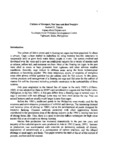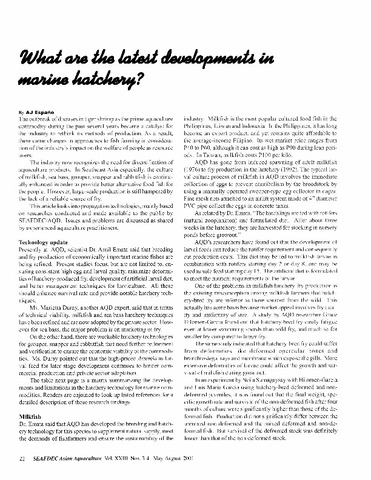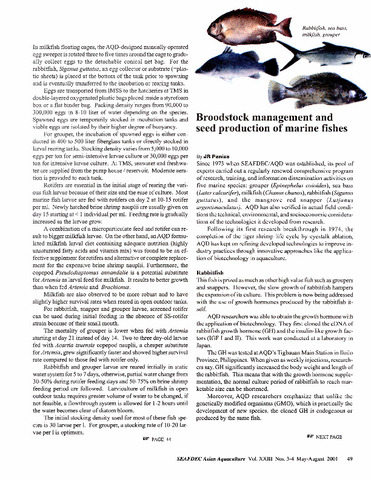Daily amount of rotifers taken by a sea bass Lates calcarifer larvae
Share
Abstract
The amount of rotifers consumed by a single sea bass Lates calcarifer larva per day (R) was examined by both the direct and by the satiation-digestion methods. In the direct method, R is estimated by the number of rotifers left in the larval tanks and larval density in the tanks, while in the satiation-digestion method R is estimated by the amount of rotifers found in the digestive tract of the larvae. In both methods, the amount of rotifers consumed by the larvae increased exponentially with larval growth. The relationship between the total length (TL) and the log-log plots of the maximum amount of rotifers eaten by a larva can be expressed by the following equations; \(R=1.799 \times TL^{4.398} (r=0.975)\) for the direct method and \(R = 4.861 \times TL^{3.432} (r = 0.907)\) for the satiation-digestion method. The relationship between TL and body wet weight (BW) can be expressed as: \(BW = 2.607 \times 10^{-4} \times TL^{3.786} (r=0.960)\) for larvae smaller than 6.5 mm TL and \(BW = 15.053 \times 10^{-3} \times TL^{2.855} (r = 0.916)\) for those larger than 6.5 mm TL.
The index of satiation was almost the same for day 6(0-6), D-9 and D-12 (8.3-23%), higher range was observed in D-15 larvae. The index of daily feeding amount was comparatively higher in D-12 larvae compared to D-6, D-9 or D-15 larvae.
Suggested Citation
Kohno, H., & Duray, M. (1990). Daily amount of rotifers taken by a sea bass Lates calcarifer larvae. Philippine Journal of Science , 119(3), 247-255. http://hdl.handle.net/10862/1313
Subject
Taxonomic term
Collections
- AQD Journal Articles [1249]
Related items
Showing items related by title, author, creator and subject.
-
Culture of grouper, sea bass and red snapper
Toledo, Joebert D. (University of the Philippines Aquaculture Society, Inc., 2001)Marine fish production has increased dramatically in the past ten years and majority of the cultured species were produced in Asia in 1992. Increase in production was accompanied with concerns on increasing outbreak of ... -
What are the latest developments in marine hatchery?
Españo, A. J. (Aquaculture Department, Southeast Asian Fisheries Development Center, 2001) -
Broodstock management and seed production of marine fishes
Paniza, J. R. (Aquaculture Department, Southeast Asian Fisheries Development Center, 2001)




